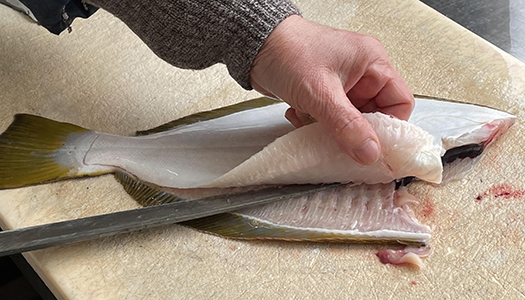
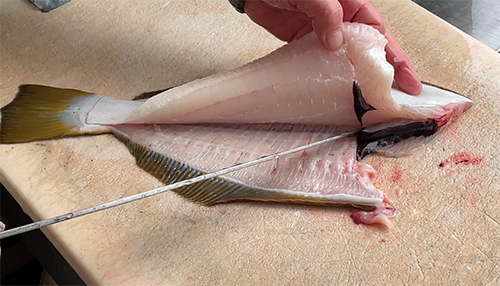
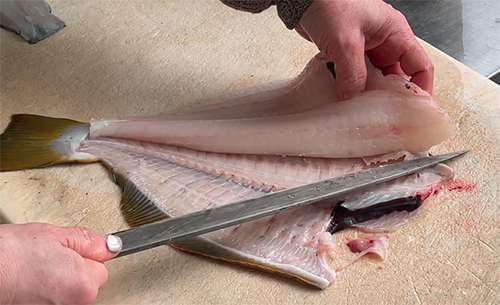
先週ひさしぶりに寿司を握ったので、すっかり魚類に首ったけ状態(笑)。ということで昨日は久しぶりに遠出して札幌から積丹の先まで足を伸ばしてみた。お目当ては東しゃこたん漁協の小売り販売店と余市のとあるお魚屋さん。東しゃこたん漁協では主に貝類探査。きのうは「まつぶ」やホタテの冷凍パックを購入してきました。殻から剥いてあるので、解凍して包丁捌きをすればおいしく楽しめる。つぶは独特のコリコリとした歯ごたえのある食感で北海道らしい地元の味わい。積丹では代表的な味覚だと思います。
で、写真上は余市の魚屋さんで購入したヒラメを捌いていただいている様子。
いわゆる「三枚におろす」包丁捌きであります。慣れたお魚屋さんのおろし方は勉強になる。旬のヒラメの美しい魚体がその美をさらに顕現してくれるプロセスから目が離せない。そう、男ってやはり美につよい憧れがあるのでしょう。ヒラメの薄いカラダがさらにうっすらと三枚におろされてその白い姿が露わになってくると、思わず歓声を上げてしまうのです。ドキドキ感がたまらない(笑)。
日本列島に人が住むようになって、四方を海に囲まれたこの国土では周辺海域の魚類と共存してきた。森が豊かな山岳列島なのでそこから植物性の栄養分が周辺海域に雨水として流れ込んで、魚類はその豊かな海域に魅せられて「うま味」を涵養し続けてきたのでしょう。世界有数の海洋国家としてこの豊かな魚類資源で3万年以上の永きにわたって日本人は命を繋いできた。陸上動物以上に多様な種類のおいしさに惑溺させられてきたのだと思います。
こういう魚の捌かれている様子を見ていると素直に感動させられる。いのちをいただくことにある種、敬虔な思いが募ってくるようでもあります。
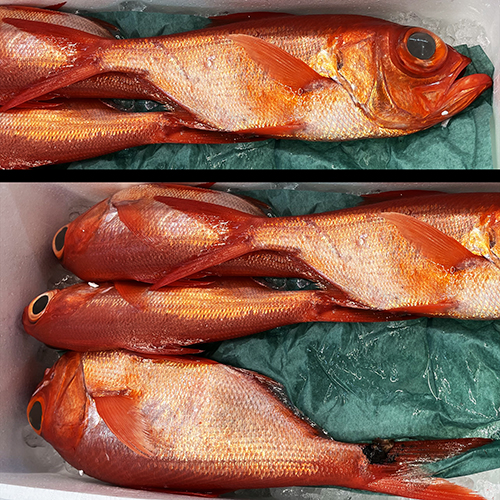
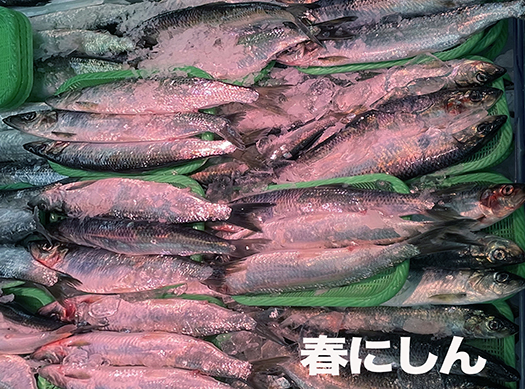
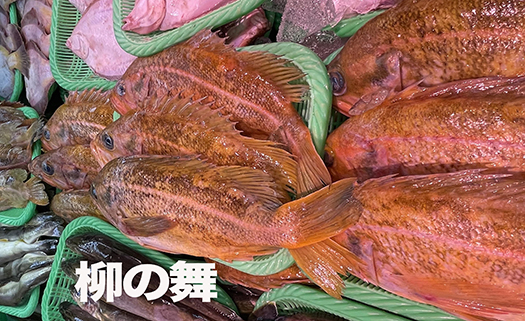
また札幌市内の庶民的な市場でも、いろいろな魚類を参観させていただいた。中央市場の魚屋さんが経営するわが家にほど近いマーケット。いま時期、北海道周辺で捕獲される魚類ですが、それぞれがまことに印象的な姿カタチで迫ってくる。以下、北海道近海の庶民的な魚たちのユニークな姿を。
キンキの魚体の外観の色合いの美しさには惚れ惚れとさせられる。一方その目元はマンガみたいな気絶っぷり。ニシンも好きな方は刺身で生食するのだそうです。細かく骨切りすることで刺身で食べられる。わたしも食べた経験はあるけれど、自分で小骨を丹念に捌く自信はない。「柳の舞」は道北・稚内で水揚げと正札に記載。ヤナギノマイはメバル科メバル属の一種で、主に北海道で大量に獲れる魚。メバル類の中では鮮度落ちが早く手頃な価格の総菜魚として売られている。価格は”メバル”としてはとても安いのだけれど、煮付けや焼き物などで食べると結構おいしくてコストパフォーマンスに優れた魚。
といったところで、ヒラメとまつぶ、ホタテなどがわが家の冷蔵庫に収納されて、今週も徐々に食卓を彩ってくれる。シェフとしてはあれこれたのしく包丁捌きを考えて調理してみたい。
English version⬇
My Family’s Weekend Shopping Trip “Looking for Fish
The spring-like weather lured us from Sapporo to the tip of the Shakotan Peninsula for a drive in search of fish. We encountered fish while looking at the sea that foretold of a gentle spring. The fish…
Last week I made sushi for the first time in a while, so I am completely hooked on fish (laughs). So yesterday I went out for the first time in a while and went from Sapporo to the tip of Shakotan. I went to a retail store of the Higashi Shakotan Fisheries Cooperative Association and a certain fish shop in Yoichi. At the Higashi Shakotan Fisheries Cooperative, we mainly explored for shellfish. Yesterday I bought a frozen pack of “matsubu” or scallops. Since they are peeled from the shell, you can enjoy them deliciously by thawing and knife processing. Matsubu has a unique crunchy texture and a local flavor typical of Hokkaido. I think it is a typical taste in Shakotan.
In the photo above, a flatfish purchased at a fish shop in Yoichi is being processed.
It is what is called “sampai ni orareru” (cut into three pieces) with a knife. It is instructive to learn how a fishmonger who is familiar with the process of grating fish. I can’t take my eyes off the process, which further reveals the beauty of the beautiful seasonal flatfish. Yes, men must have a strong yearning for beauty. When the thin body of the flounder is further stripped down to three pieces, exposing its white body, you can’t help but let out a squeal of delight. I can’t get enough of the thrill (laughs).
Since people have come to live on the Japanese archipelago, this land surrounded by the sea on all sides has coexisted with fish from the surrounding waters. As a mountainous archipelago with rich forests, plant nutrients from these forests flow into the surrounding seas as rainwater, and fish have been attracted by the richness of these waters and have continued to cultivate their “umami” taste. As one of the world’s leading maritime nations, Japanese people have been sustaining their lives for more than 30,000 years on this rich fish resource. I believe that we have been bewitched by the variety of tastes more than land animals.
I am honestly moved when I see these fish being processed. It is as if a kind of reverence for life is being stirred up in me.
We also had the opportunity to visit a variety of fish products at a common market in Sapporo. A market close to our house, run by a fishmonger in the central market. The fish caught around Hokkaido at this time of the year are all very impressive in their own way. Below are some of the unique forms of common fish caught in the waters around Hokkaido.
The beauty of the coloration of the kinki fish’s body is a sight to behold. Its eyes, on the other hand, are cartoonishly fainting. Herring is also eaten raw as sashimi if you like. By cutting the bones into small pieces, it can be eaten as sashimi. I have had the experience of eating it myself, but I do not have the confidence to carefully cut the small bones by myself. The “Yanaginomai” is listed on the tag as being landed in Wakkanai, northern Hokkaido. Yanaginomai is a member of the family Mevalidae, and is caught in large numbers mainly in Hokkaido. It is sold as a reasonably priced side dish fish because it does not lose its freshness as quickly as other mebaru species. Although the price is very low for a “mebaru” fish, it is quite tasty when boiled or grilled, making it an excellent cost-effective fish.
So, the flatfish, matsubu and scallops have been stored in our refrigerator and will gradually grace our dining table this week. As a chef, I would like to enjoy cooking them with a knife.
Posted on 2月 12th, 2023 by 三木 奎吾
Filed under: おとこの料理&食







コメントを投稿
「※誹謗中傷や、悪意のある書き込み、営利目的などのコメントを防ぐために、投稿された全てのコメントは一時的に保留されますのでご了承ください。」
You must be logged in to post a comment.